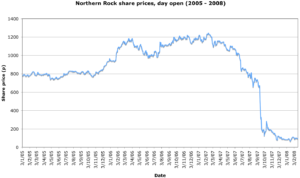Trading Journal Template Tracking Your Trades and Maximizing Profits – In the fast-paced world of trading, keeping a record of your trades is essential for success. A trading journal serves as a valuable tool that allows you to track your trades, analyze your performance, identify patterns, and make informed decisions. In this article, we will explore the importance of a trading journal and provide you with a comprehensive trading journal template to help you organize your trading activities effectively.
Understanding the Importance of a Trading Journal
A trading journal is a comprehensive record of your trading activities. It captures important information about your trades, including entry and exit points, trade duration, outcomes, emotional factors, and more. By maintaining a trading journal, you gain valuable insights into your trading habits, strengths, and weaknesses. It allows you to analyze your performance, identify patterns, and make data-driven decisions to improve your trading strategy.
Key Components of a Trading Journal
A well-structured trading journal consists of several key components:
Trade Details
In this section, you record basic information such as the date of the trade, the traded instrument, position size, and any relevant identifiers.
Trade Entry and Exit Points
Here, you document the specific prices at which you entered and exited the trade. This information helps you evaluate the accuracy of your entries and exits.
Trade Duration
Tracking the duration of each trade provides insights into the effectiveness of your trading strategy. It helps you identify optimal holding periods and determine if your trades align with your intended timeframes.
Trade Outcome and Analysis
In this section, you record the outcome of each trade, whether it was a profit or a loss. It is important to analyze the factors that contributed to the outcome, such as market conditions, technical indicators, or news events.
Emotional and Psychological Factors
Keeping track of your emotions and psychological state during trades is crucial. Note any feelings of fear, greed, or hesitation, as they can impact your decision-making process.
Risk and Money Management
In this section, you record the risk-to-reward ratio, stop-loss levels, and profit targets for each trade. This helps you evaluate the effectiveness of your risk management strategies and adjust them accordingly.
Trade Notes and Comments
Here, you can add any additional notes or comments about the trade. This may include observations, lessons learned, or ideas for future trades.
Trade Charts and Graphs
Including visual representations of your trades, such as charts and graphs, enhances the readability and analysis of your trading journal. It allows you to identify patterns and trends more easily.
Benefits of Using a Trading Journal
Maintaining a trading journal offers several benefits for traders of all levels of experience:
Self-Reflection and Improvement
Regularly reviewing your trading journal enables self-reflection and helps you identify areas for improvement. By analyzing your past trades, you can learn from your mistakes and refine your trading strategy.
Identifying Trading Patterns
A trading journal allows you to spot patterns in your trading behavior, such as recurring mistakes or successful strategies. This insight helps you modify your approach and become a more consistent trader.
Making Informed Decisions
With a trading journal, you have a wealth of historical data at your fingertips. By analyzing past trades, you can make more informed decisions based on patterns and trends.
Evaluating Trading Strategies
A trading journal helps you assess the effectiveness of different trading strategies. By comparing the results of various approaches, you can identify which strategies yield the best outcomes and adjust your trading plan accordingly.
Enhancing Discipline and Accountability
Keeping a trading journal encourages discipline and accountability. When you have to record every trade, you become more conscious of your actions and are less likely to deviate from your trading plan.
Tracking Progress Over Time
A trading journal allows you to track your progress over time. By comparing your current performance with past records, you can measure your growth as a trader and set realistic goals.
Sharing and Learning from Others
Trading communities often share trading journals for educational purposes. By examining other traders’ journals, you can gain insights, learn new strategies, and broaden your understanding of the market.
Tax and Regulatory Compliance
For tax and regulatory purposes, a trading journal serves as a reliable source of information. It helps you accurately report your trades and comply with legal requirements.
How to Create a Trading Journal
Creating a trading journal involves several key steps:
Choose a Journal Format
Decide whether you prefer a digital format, such as a spreadsheet or specialized trading journal software, or a physical notebook. Choose a format that suits your preferences and trading style.
Determine Key Metrics and Data Points
Identify the essential metrics and data points you want to track in your trading journal. Consider the components mentioned earlier, such as trade details, entry and exit points, and emotional factors.
Set Up Spreadsheet or Journal Template
If you choose a digital format, create a spreadsheet or use a pre-designed trading journal template. Ensure the template includes all the necessary sections and columns for your trading journal.
Customize the Template to Suit Your Trading Style
Tailor the template to your specific needs. Add or remove sections as required and modify the layout to align with your trading preferences.
Establish a Routine for Recording Trades
Create a routine for recording your trades in the journal. Set aside time after each trade or at the end of the trading day to enter the relevant information. Consistency is key.
Regularly Review and Analyze Your Trading Journal
Make it a habit to review and analyze your trading journal regularly. Look for patterns, evaluate your performance, and identify areas for improvement. This ongoing analysis will help refine your trading strategy.
Trading Journal Template: A Step-by-Step Guide
To help you get started, here is a step-by-step guide to creating a trading journal template:
Trade Details Section
- Date of the trade
- Traded instrument
- Position size
- Unique trade identifier
Trade Entry and Exit Points Section
- Entry price
- Exit price
- Stop-loss level
- Profit target
Trade Duration Section
- Date and time of trade entry
- Date and time of trade exit
- Duration of the trade
Trade Outcome and Analysis Section
- Profit or loss
- Percentage gain or loss
- Factors contributing to the outcome
Emotional and Psychological Factors Section
- Emotions experienced during the trade
- Psychological state (confidence, fear, etc.)
- Impact on decision-making
Risk and Money Management Section
- Risk-to-reward ratio
- Stop-loss level
- Profit target
- Capital allocation
Trade Notes and Comments Section
- Observations and lessons learned
- Ideas for future trades
- Trade-specific comments
Trade Charts and Graphs Section
- Visual representation of trade performance
- Candlestick charts, line charts, or other relevant graphs
Conclusion
A trading journal is a powerful tool that can significantly improve your trading performance. By diligently recording and analyzing your trades, you gain valuable insights into your strengths, weaknesses, and trading patterns. Utilize the provided trading journal template to organize your trading activities effectively and make informed decisions that maximize your profits.
FAQs
- What is the best format for a trading journal?
- The best format for a trading journal depends on your personal preferences and trading style. It can be a digital spreadsheet, a specialized trading journal software, or a physical notebook.
- How often should I review my trading journal?
- It is recommended to review your trading journal regularly, preferably after each trading session. This allows you to identify patterns and make timely adjustments to your trading strategy.
- Can I use digital tools or apps to maintain my trading journal?
- Yes, there are numerous digital tools and apps available specifically designed for maintaining a trading journal. These tools offer features that streamline the process and provide additional analysis capabilities.
- Is it necessary to include charts and graphs in my trading journal?
- While not necessary, including charts and graphs in your trading journal can enhance your analysis and make it easier to identify patterns and trends in your trading performance.
- Can a trading journal help me become a better trader?
- Yes, a trading journal is a valuable tool for self-improvement as a trader. It allows you to reflect on your trades, identify areas for improvement, and make data-driven decisions to enhance your trading strategy.




